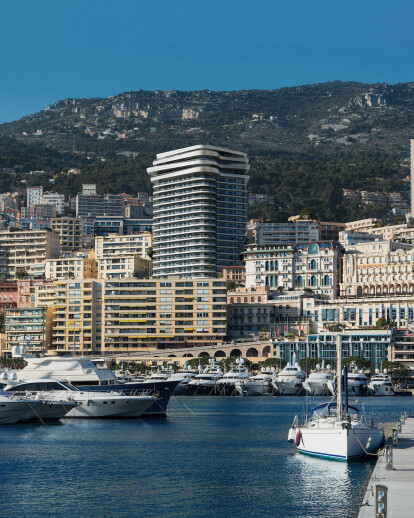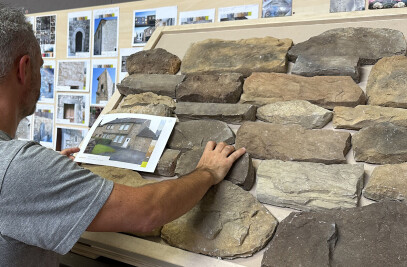Built in 1963, Le Schuylkill Tower was the first high rise building constructed in Monaco. Occupying a prominent position in Monte Carlo, the residential tower overlooks the principality’s Port Hercule with panoramic views south to royal palace, the old town, and beyond to the Mediterranean Sea.
The Schuylkill is a residential building which sits on a steep site and is accessible from both the Boulevard de Suisse to the North and the Avenue de la Costa to the South. The declivity across the site is considerable at 22m.
Architecturally, the existing building is well adapted to the site and has been configured to benefit fully from the views towards the sea and to manage the steep topography of the site. In plan it is arranged in an open 'U' shape to maximise the number of apartments with sea facing views. All apartments have balconies providing outdoor space.

In section, the building is arranged into 2 distinct parts; the lower part comprising 7 storeys built against the rock face and the upper part comprising 17 storeys but split into 3 individual blocks, each with a vertical circulation core on the North side of the building. There is no horizontal circulation between the 3 blocks above ground.
Programmatically, the lower part of the building contains car parking, cellars, storage, service rooms and technical rooms. The upper part is all residential accommodation ranging from small studio apartments to large 4-bedroom apartments. The existing building provides 188 apartments, 5 service rooms, 145 car parking spaces and 198 cellars for the residents’ personal storage.
Structurally, the existing building is a reinforced concrete frame arranged in 2 distinct parts. The lower part (Ground to basement level 7) comprises a single block (35m x 48m) and the upper part comprises 3 separate vertical blocks. The floor slabs in the lower levels are solid concrete whilst in the upper parts they are beam and block slabs with a concrete infill approximately 10cm thick. Covering the concrete in the upper residential areas is a 5cm thick layer of sand, providing effective acoustic insulation between floors.
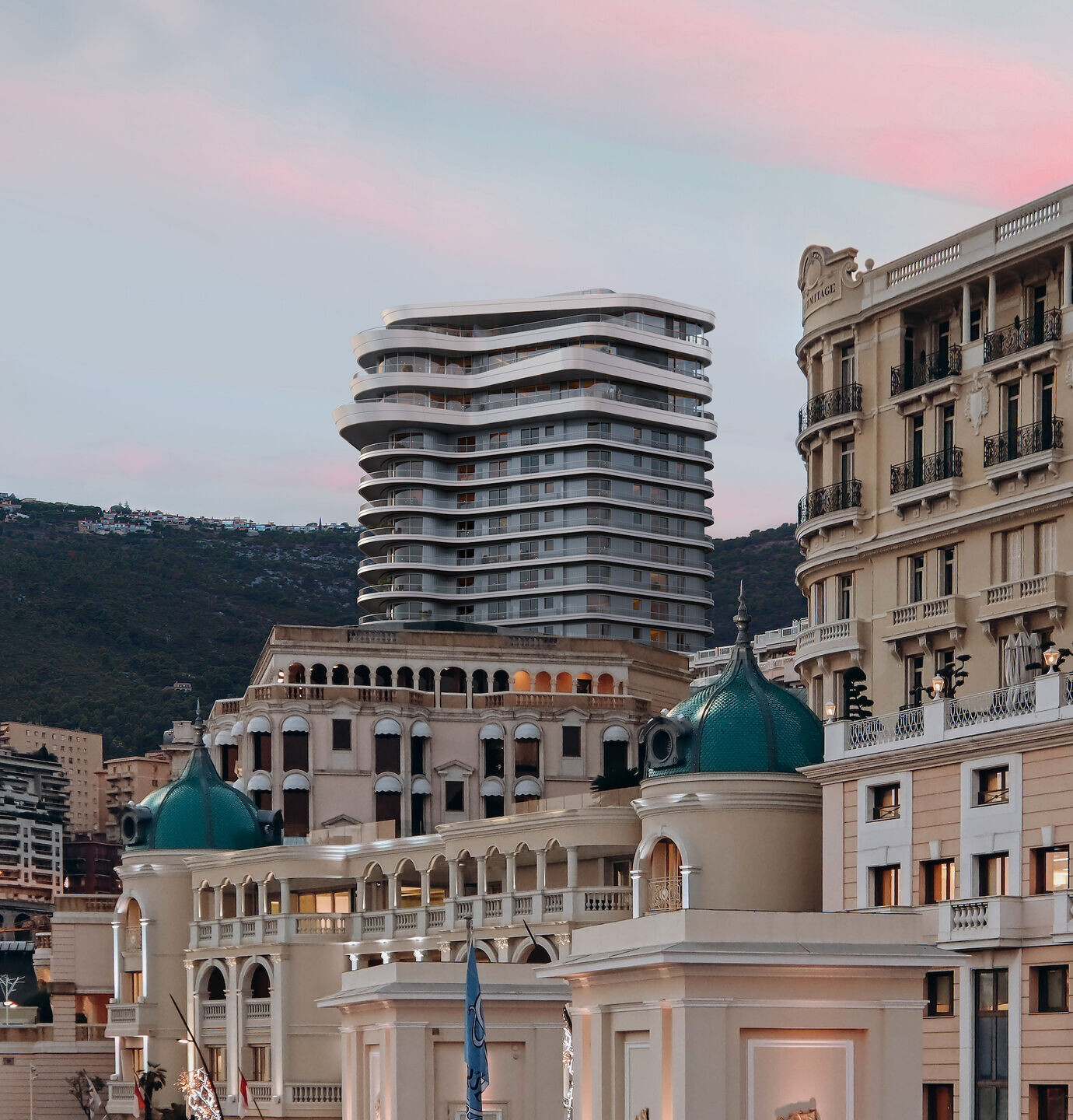
All load bearing columns run vertically through the entire building. As the entire site is against load bearing rock the foundations are shallow pads and there are no retaining walls around the perimeter.
The building services are distributed vertically, from plant rooms in the basement, through the stair and lift cores and various risers across the floor plates. Generally speaking, ventilation and water distribution are located in risers across the floor plates whilst the core areas contain electrical distribution and waste chutes. Hot water production, including central heating, is powered through 2 oil-fired boilers and a 30,000 litre fuel storage facility.
Hot water distribution is achieved using 4 electrically powered pumps. Each apartment is fitted with individual electrically powered hot water tanks for domestic hot water (bathrooms). Wastewater, grey water and rain water are all collected and evacuated separately.

Ventilation in the apartments is achieved with a "shunt" type system using natural ventilation (Stack Effect). There are 22 ducts distributed across the floor plate and running vertically through the building and extracted at roof level. Internally, the extract grills are located in the bathrooms, toilets and kitchens. The majority of the apartments are dual-aspect allowing cross-flow ventilation to supplement the shunt ventilation system. There is no mechanical air conditioning in the existing building.
There is no mechanical smoke extraction either. In the residential parts, the staircases are naturally ventilated through the facade and in the car park areas there are grills distributed around the perimeter walls providing cross ventilation. There are between 22-26 car spaces per floor, spread over 6 floors.
The main building façade comprises uninsulated single skin masonry blockwork walls with mosaic tiles on the exterior. The glazed doors and windows are extruded, anodised aluminium frames with single glazing. All glazed openings are fitted with roller shutters on the outside. The balconies are continuous around almost all the building’s perimeter and are fitted with retractable solar blinds providing shade on the balconies. The façade on the existing stairwells are solid stone louvers with a 50% clear opening to provide for natural smoke extraction.
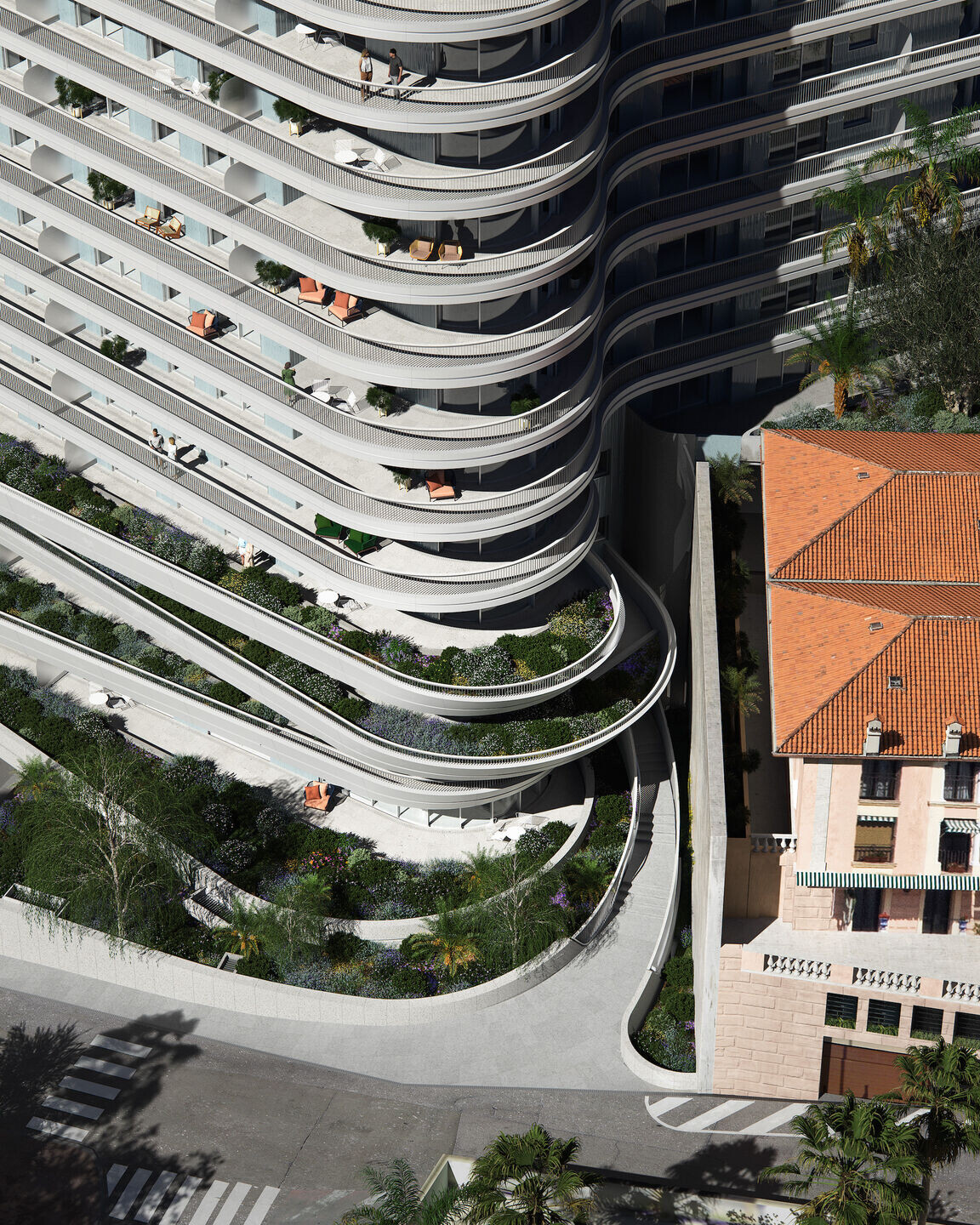
The Schuylkill tower was completed in 1963 and has arrived at a life cycle milestone. Although the tower has been well maintained, it is no longer adapted to current living standards, codes regulations nor to environmental imperatives. A detailed feasibility study demonstrated that renovating the existing building was preferable from both a financial and environmental stance.
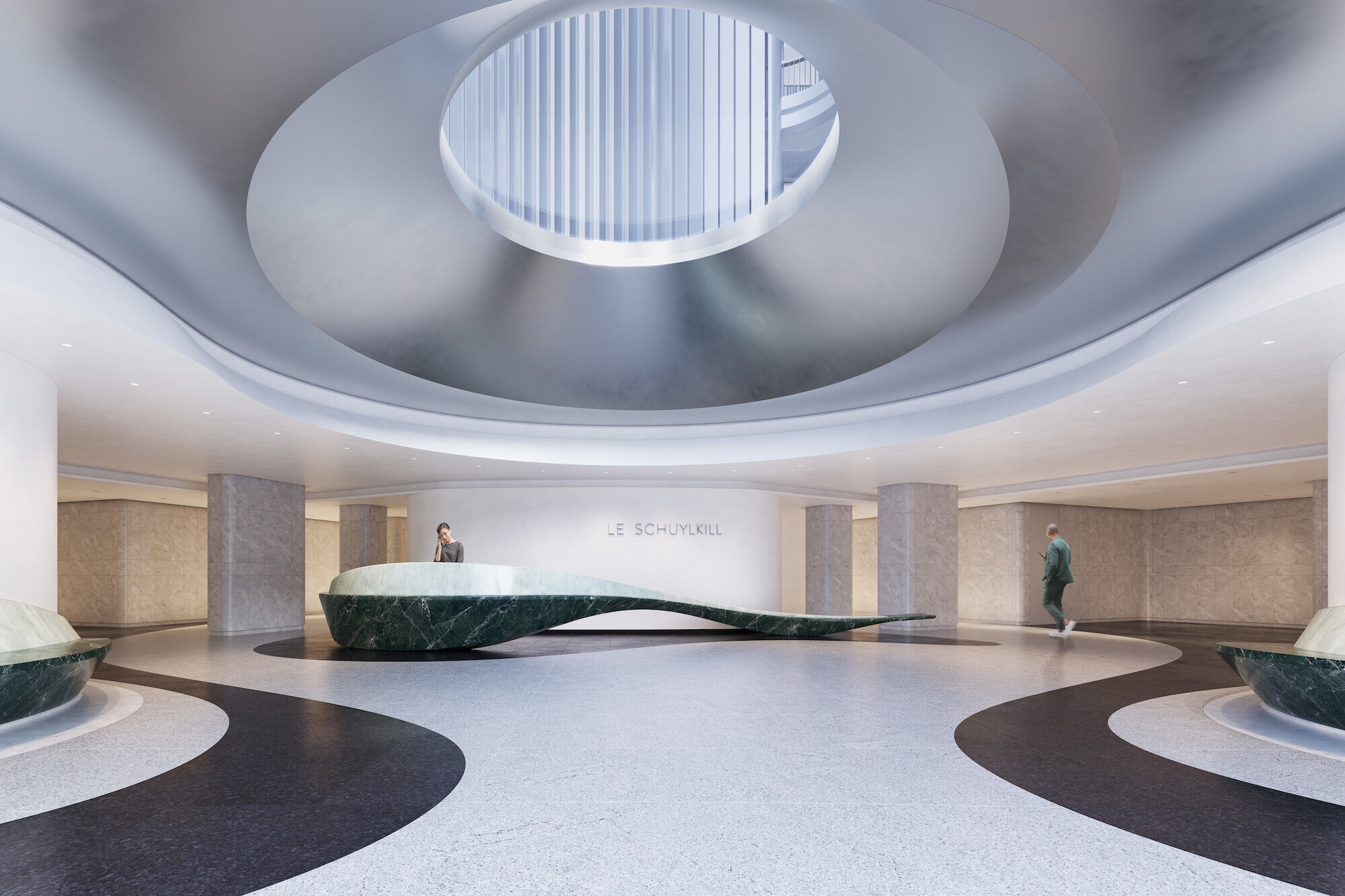
Batiments Durable Mediterraneen de Monaco (BD2M) certification
After careful consideration, the client opted to pursue the BD2M environmental accreditation scheme, given it is well adapted to the Mediterranean climate. The BD2M certification assesses the project through 7 major themes: territory and site, materials, energy, water, comfort and health, social and economics, and project management. The Schuylkill project excels (scoring 75/80 points) across all 7 themes and respects the baseline prerequisites for a Silver score target for the following categories: overall cost analysis, site analysis, bioclimatic approach, adapted vegetation and exterior spaces treatment, use of eco-performing materials, energetic performance, energy consumption monitoring, summer comfort analysis, environmental project development supervision and guidance, project management, , envelope air tightness and a “clean site” management. The certification process requires 3 reviews to achieve the target level. The project reviews are at design stage, at the end of construction and after two years of operation. This approach ensures longer monitoring than an average certification and guarantees performance at all key phases of the project. The BD2M design committee reviewed the project in late 2023 and awarded a Silver rating for the design stage evaluation, praising the sustainability approach and innovative character of the project.
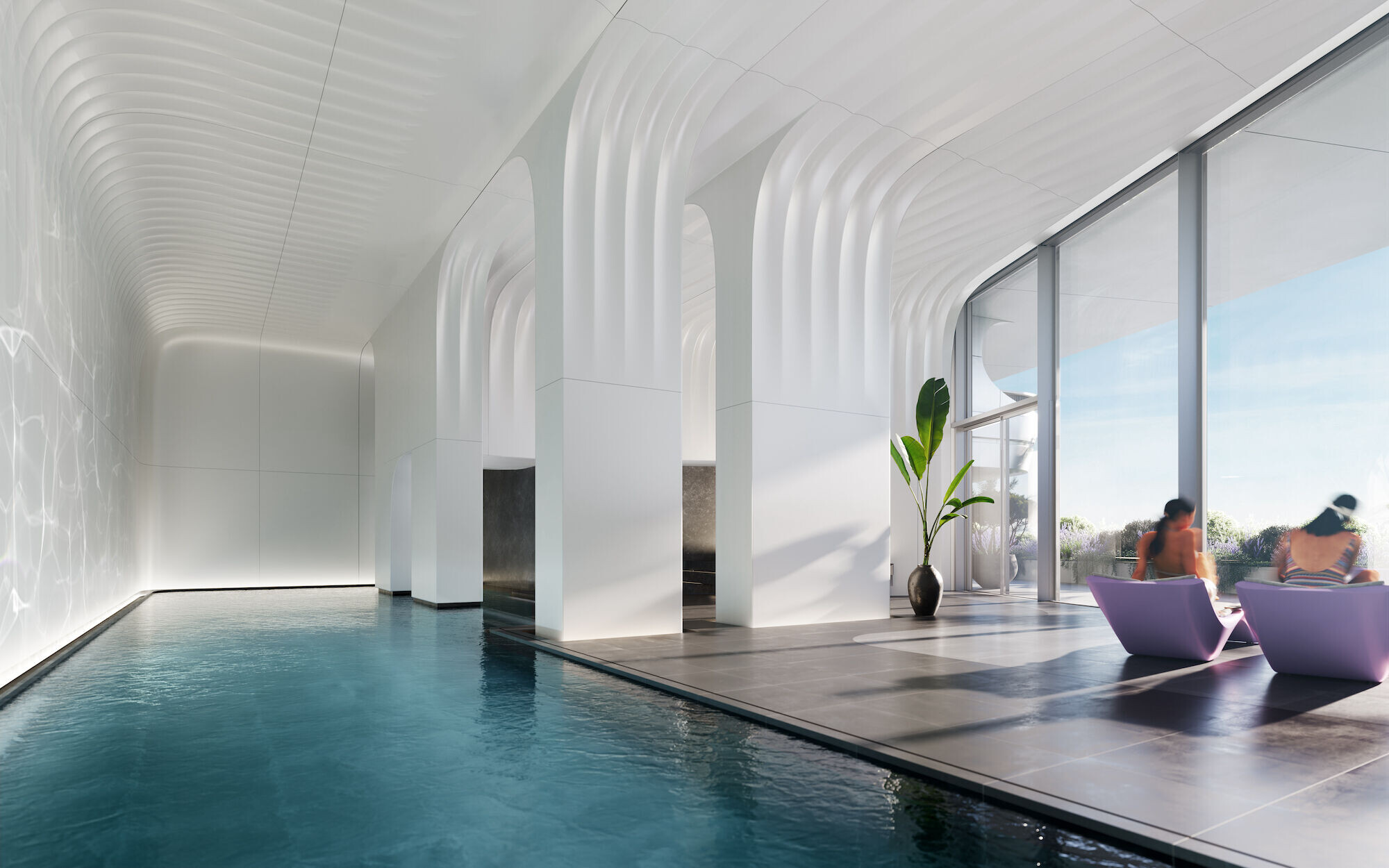
Carbon savings
The Schuylkill building is considered a “decarbonized” building, removing oil-based energy supplies, and replacing them with renewable energy sources. In addition to preserving the existing concrete structure, careful selection of materials, products, technical equipment and systems has contributed to lowering whole life carbon emissions. This selection process includes identification of the existing building components for off-site recycling, reuse and repurposing. To confirm this, a whole life carbon assessment has been carried out, resulting in a global carbon impact of 623 kgCO2e/m². In comparison, the current French threshold for new built residential building target is set at 750 kgCO2e/m² which will reduce to 650 kgCO2e/m² by 2025. (RIBA 2030 Climate Challenge thresholds are 1200 kgCO2e/m² currently, reducing to 625 kgCO2e/m for 2030.)
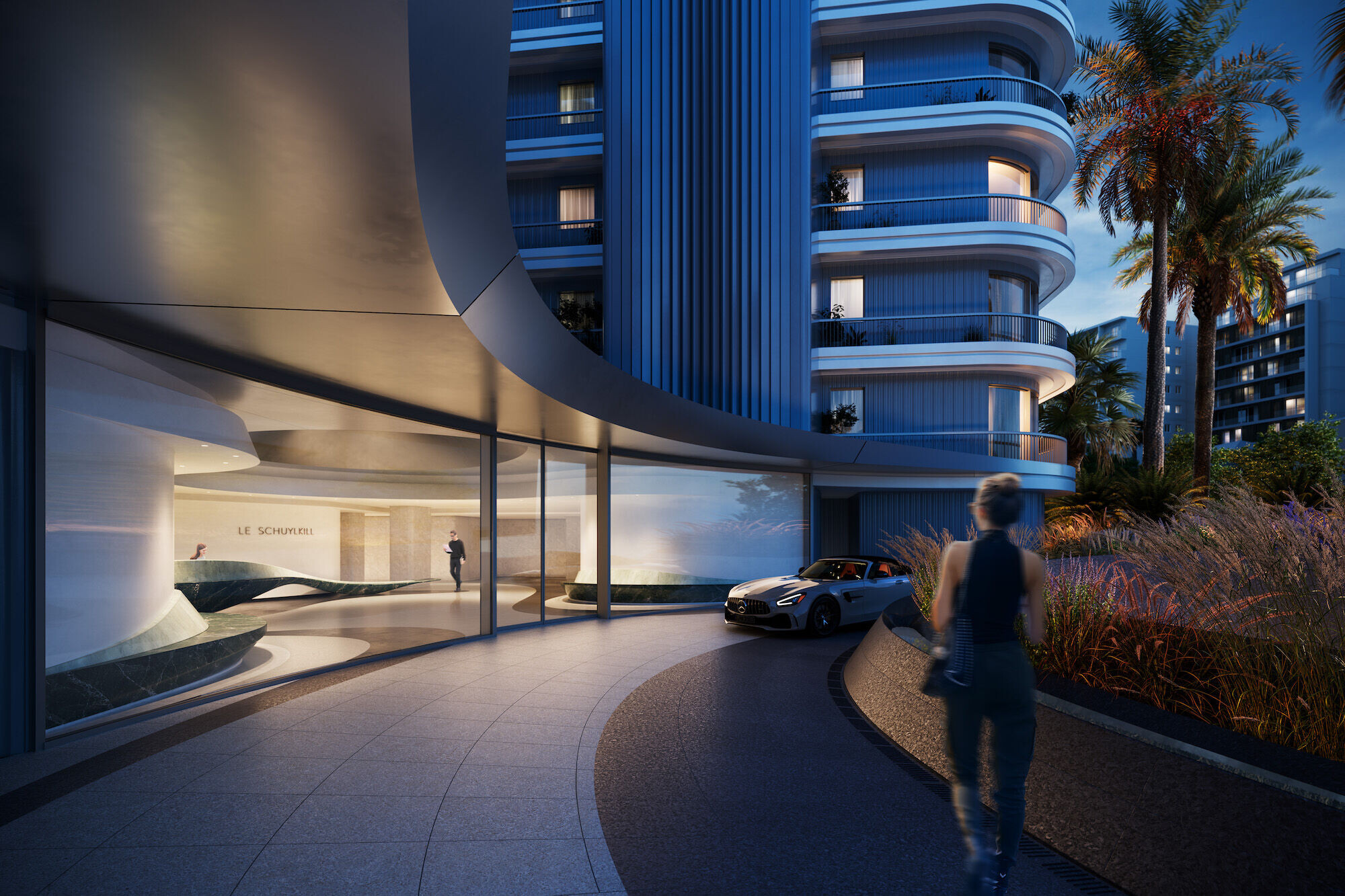
Water recycling
Water use is a fundamental issue in the mediterranean environment, and it has been a key consideration throughout the design process. Water recovery and reuse as well as reduced consumption are the key objectives. The main principles are: - Reducing water pressure alongside the use of water saving and low consumption sanitaryware and fittings.
- The use of a greywater recovery system providing recycled water for the toilets, reducing the use of clean / drinking water by 6,000 m3 per year and reducing the environmental impacts associated with clean water production.
- The use of a greywater heat exchanger to reduce energy used for hot water production, estimated at 90 MWh/yr. Le Schuylkill Monaco Environmental Statement Continued - Implementation of a water leakage detection system connected to the potable water monitoring system. - Rainwater harvesting for irrigation of the exterior green spaces. The increase of the external areas permeability and an efficient drainage system improves the recovered water volume, estimated at 30 m3)
- Selection of drought tolerant plants for the exterior planting and the implementation of a low consumption water irrigation system. - The installation of a sea water cooling loop – see below.

Seawater cooling loop
The existing building energy supply is oil based and will be dismantled and replaced with a sea water loop providing heating, cooling and hot water. The seawater loop is connected to heat pumps equipped with a refrigerant-reversing valve allowing it to operate in either heating or cooling mode. During the past couple of years, Monaco has been implementing a seawater loop infrastructure to provide sea water air conditioning (SWAC) to new developments in the principality. Although the Monte Carlo neighbourhood is not connected with a seawater loop network, the client’s motivation to promote renewable energies for the Schuylkill has resulted in an agreement the operator to create a new substation on the site. The connection to the seawater loop as a renewable energy source provides 70% of the required energy for the production of heating, cooling and hot water.
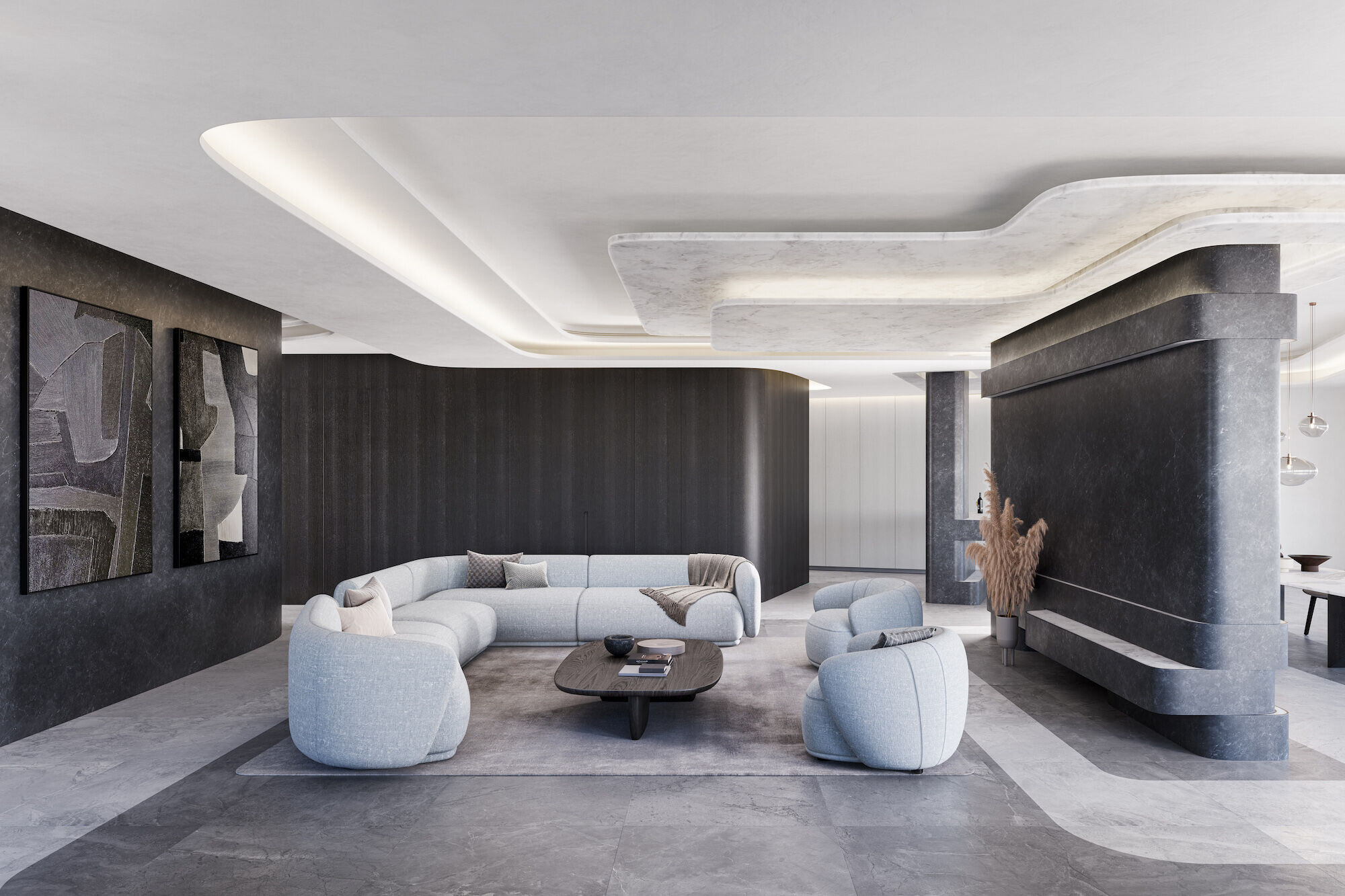
Materials, recycling and reuse
The recycling and reuse of existing building fabric components has been considered from the outset of the design process. In the early design stages, extensive surveys of the building materials and components accompanied by a partial strip-out enabled detailed re-use assessments to identify appropriate off-site recycling outlets (specialist recycling centres, reclamation yards, etc) The materials and components identified for off-site reuse, recycling or reclamation include; floor and walls finishes, doors, furniture, window frames, glazing, metal balustrades and technical equipment such as surveillance and fire safety systems, radiators, emergency generators. Most of the existing concrete structure is preserved. Structural analysis and 4D monitoring of the existing structure allowed for targeted reinforcements to transfer the new loads and resist seismic forces in compliance with the current regulations. The structural analysis included the necessary information to treat affected areas. Low carbon concrete is used for the new structures and foundations. The lightweight structure of the penthouse extension uses low carbon steel profiles (XCarb). The choice of new materials and equipment has been carefully considered. When possible, new materials were selected for their extended life span and their reduced carbon impact. Eco-labelled materials and finishes have been specified (e.g., FSC certified wood and timber products, bio-based insulation with vegetal pith binders, A+ / low toxicity paint, recycled glass insulation, etc.). In line with the BD2M certification requirements, all materials are specified with a bias for using local and regional supply chains. All new technical equipment has been selected and specified considering extended lifespan, high efficiency, and reduced maintenance characteristics.

Envelope design
The new envelope targets 2 main objectives: architectural quality and an energy performance.
The trunk of the tower is composed of an insulated terracotta rainscreen and double-glazed units. It is durable and sustainable, and well adapted to the aggressive marine environment. It also responds to current fire requirements for a high-rise building (IGH Immeuble Grande Hauteur) This new envelope provides new acoustic and thermal insulation, airtightness, waterproofing and solar protection. Thermal insulation is achieved using high-performance and eco-labelled insulation (average u value of 0.6 W/m².K) to the entire building envelope and roofs. Acoustic insulation is performed by solid concrete and masonry walls backing the rainscreen and by the use of acoustic laminated glass. All new glazed facades and windows integrate aluminium thermally broken frames, double glazing units and external blind systems. The airtightness of the building is a major challenge for controlling energy consumption and the new envelope has a performance below 0.8 m³/h.m². As an additional measure, air leakage tests will be performed on all windows and curtain walls, rather than a partial sample testing to guarantee the performance is achieved.
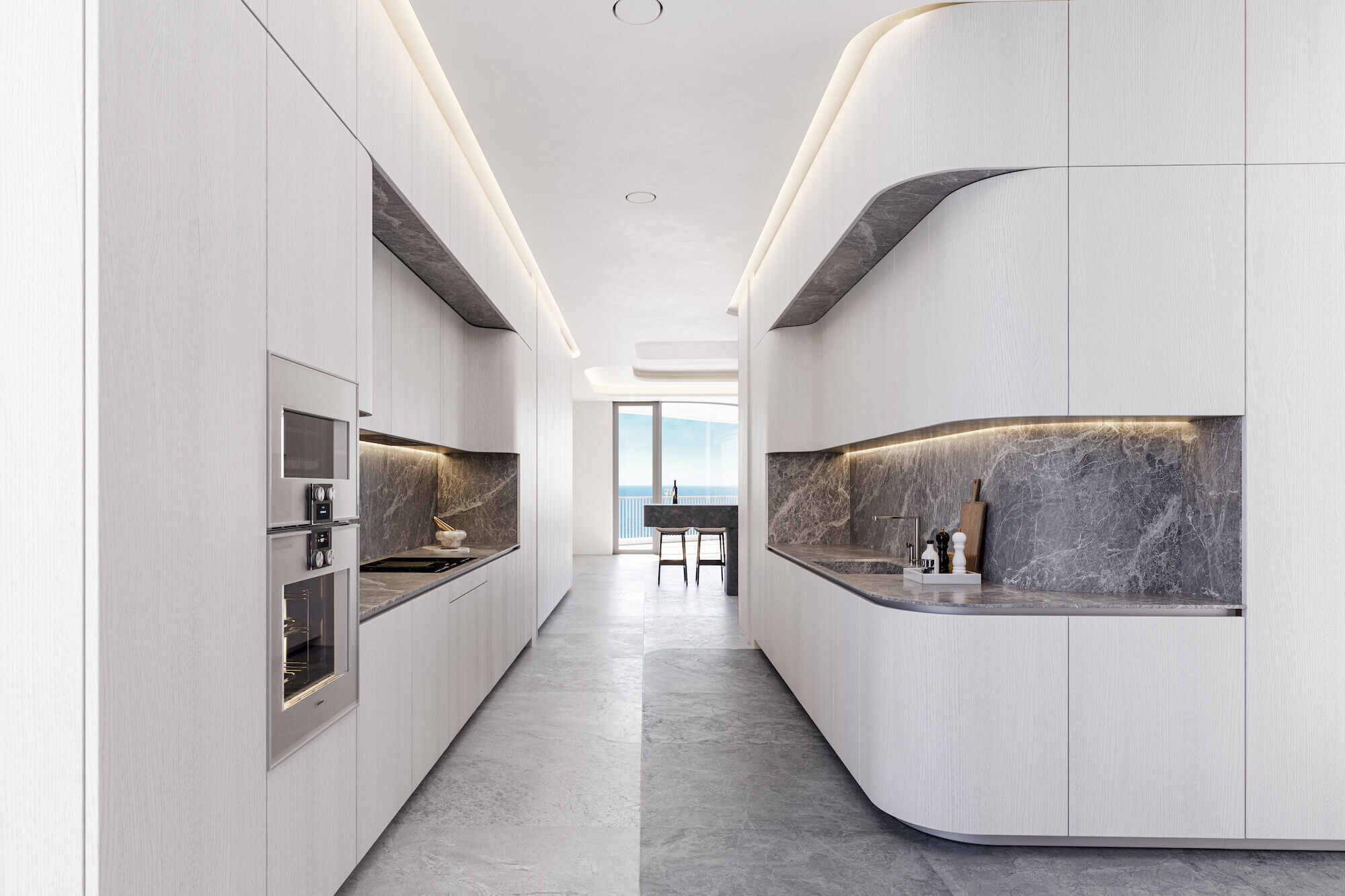
Solar protection
Protection against solar radiation is a major challenge in the Mediterranean region. The building morphology with continuous horizontal balconies and terraces offers good and efficient passive protection to the facade during the hot summer season. A second layer of protection uses retractable and adjustable venetian blinds, positioned on the external face of the glazed units. The façade solar radiation simulations have permitted to quantify the energy loads on the façade, to evaluate the efficiency of the balconies and to assess the different sun protection solutions required. Along with this simulation a UTCI model (Universal Thermal Climate Index) has been carried out to assess the user thermal comfort in the balcony and terrace areas and the efficiency of additional sun protection (retractable awnings) The combination of external blinds and glazing has been specified to meet solar factor / light transmission needs, ensuring good solar protection while ensuring optimal natural light levels into interior spaces. The external light reflection is also restricted to 12% to avoid excessive glare and discomfort.
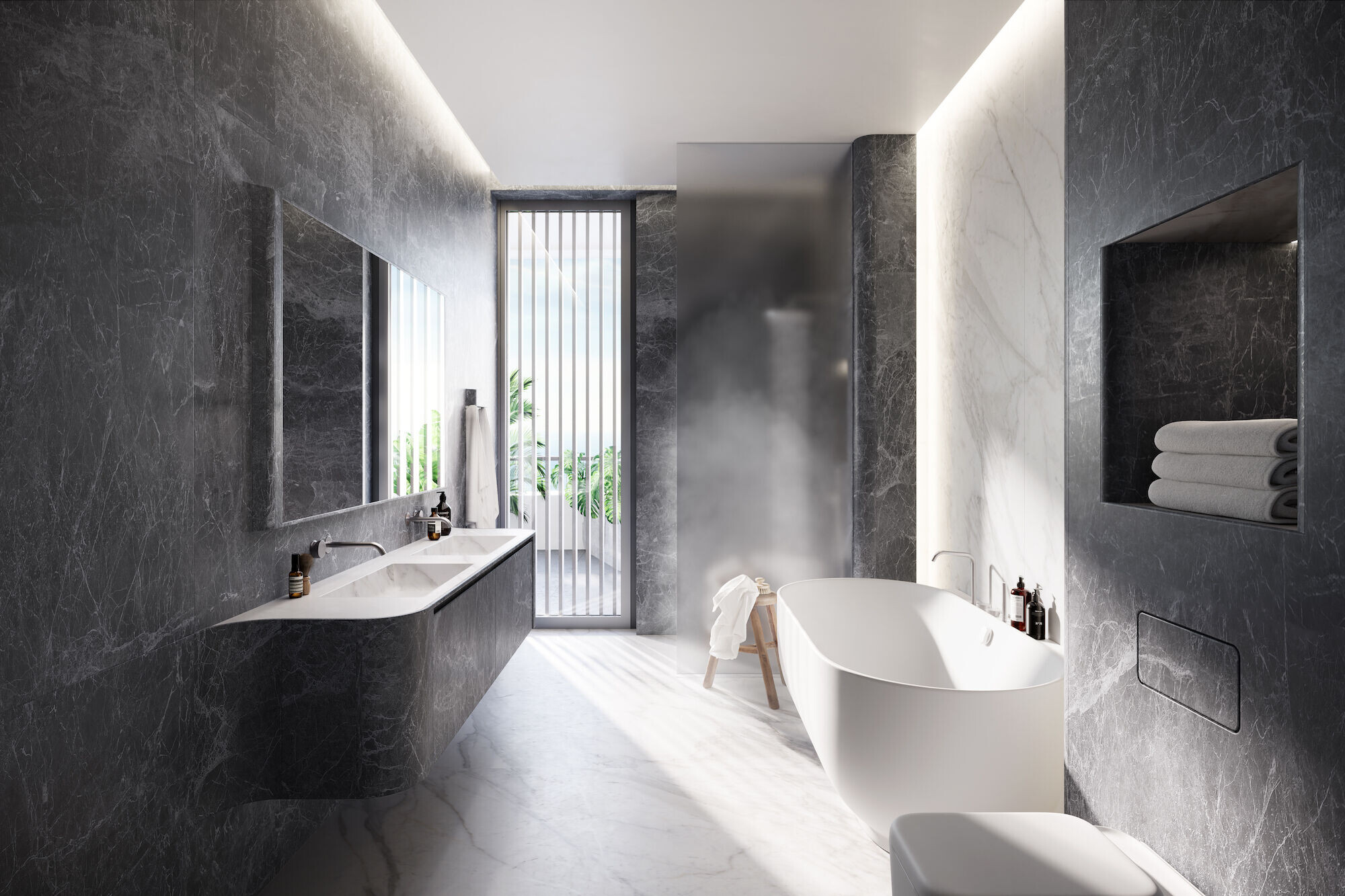
Thermal performance
A thermodynamic analysis has been conducted to assess the thermal behaviour of the building over a full year to validate the effectiveness of passive cooling devices. The analysis has been conducted under 2 meteorological scenarios: the current average meteorological data from the Monaco station and a forecast into year 2050 as per the GIEC meteorological scenario prediction. The excellent performance of the new envelope is confirmed under the current average meteorological scenario where 99% of the living areas achieve an ‘adaptive’ thermal comfort without the use of cooling systems. This performance represents a BD2M Gold medal rating. Under a predictive 2050 meteorological scenario, a light cooling system contribution is needed to maintain discomfort below an 8% threshold.
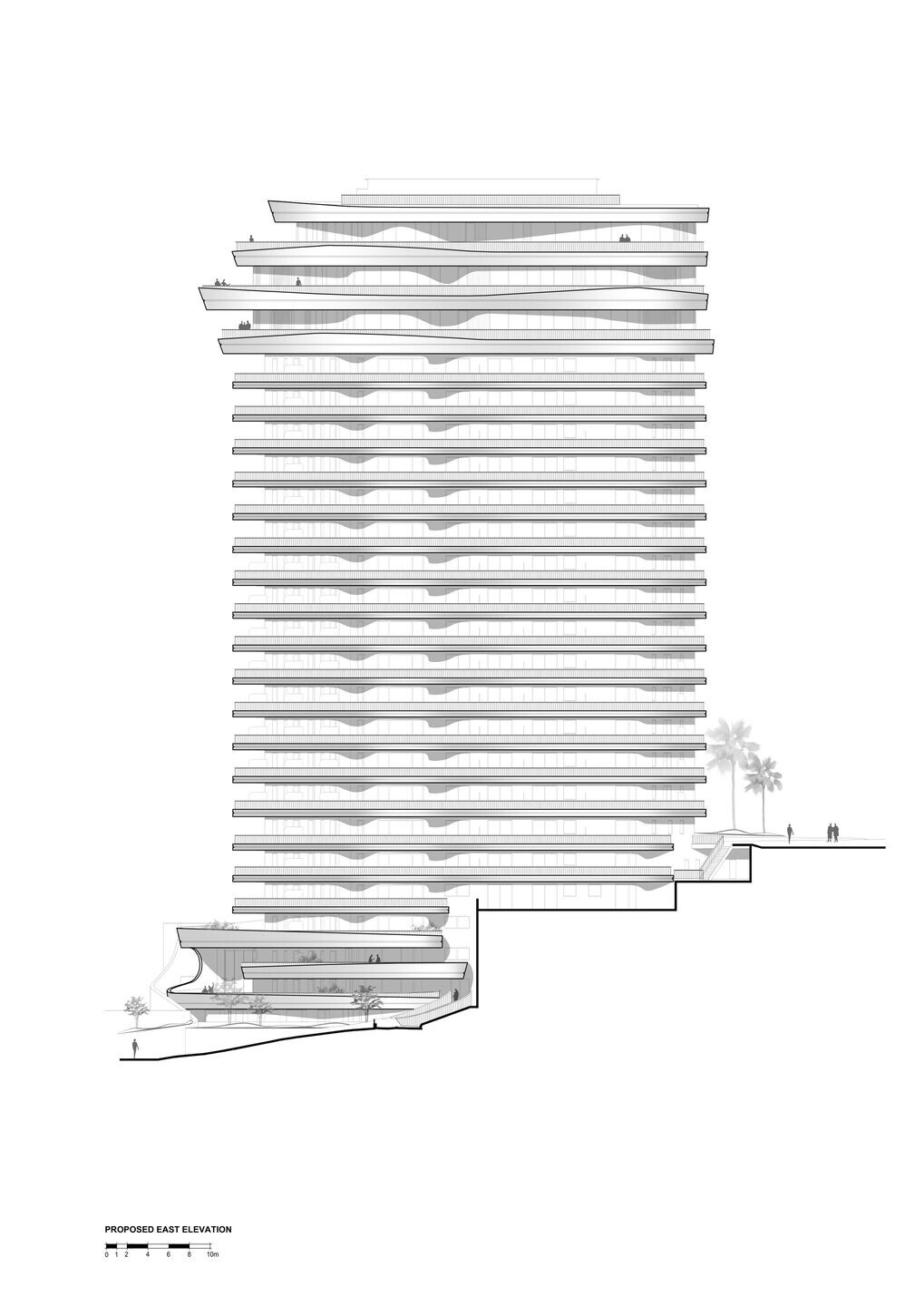
Optimised performance of new services
Low energy consumption lighting fixtures with a self-restricted lighting power supply limited to 7W/m2. All new services are compliant with the eco design Eup/ErP certification. Low energy consumption lift systems with optimized traffic planning by vertical transportation specialists and manufacture’s simulations. Le Schuylkill Monaco Environmental Statement Continued Ventilation in all living spaces is done using a double flow controlled mechanical ventilation system (CMV) to reduce heat loss due to ventilation. The exchangers, which are located on the roof, have a 90%+ efficiency. Heating, cooling and hot water production is a centralized production unit using heat pumps connected the seawater loop and using a refrigerant-reversing valve allowing it to operate in either heating or cooling mode. All hot water columns are distributed across the floor plates and run vertically, close to the terminal points and not through the cores. This prevents horizontal runs on the floor building up with the consequent thermal loss and unwanted heating of floors in communal areas. Energy consumption is permanently monitored and displayed at each individual apartment and the data is accessible to the user and operators. The services can be also remotely controlled by the occupants. A Building Management System (BMS) controls the building’s services including the sun protection devices to provide optimised thermal comfort to the occupants, facilitate the operation of technical equipment and to optimize the energy consumption of the building. It also facilitates maintenance.
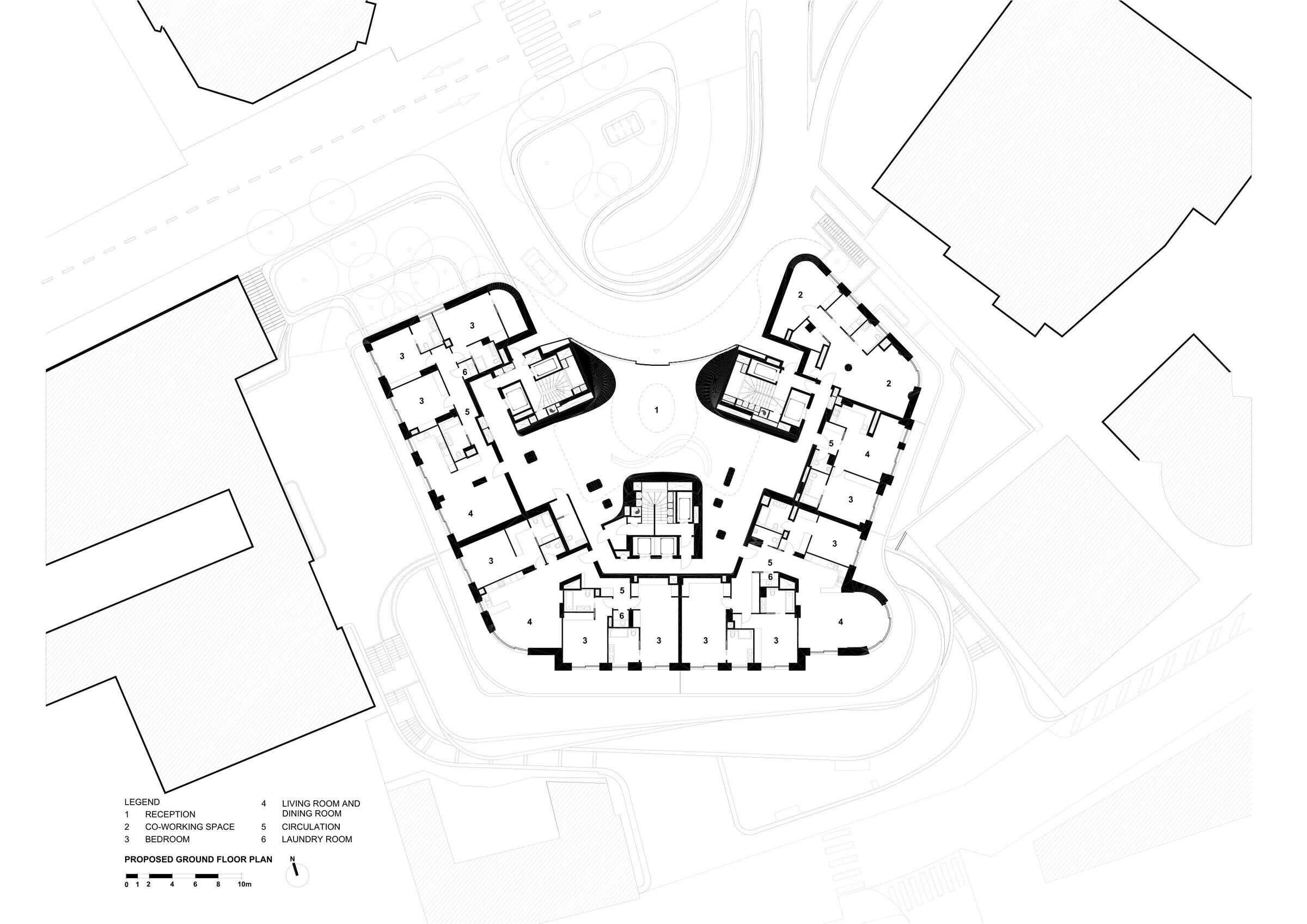
Energy consumption
The operational energy performance of the building has been drastically improved with energy consumption being more than halved. The current existing building consumes 195 KWh/m2/yr whilst the renewed building will consume 82 KWh/m2/yr, which represents a gain of 58%.
Comfort
The Schuylkill is a project designed for the comfort of its users. Numerous microclimate studies were undertaken to make architectural design choices. These were done at different building scales and with different levels of detail. They include wind comfort analysis for the external areas, terraces and balconies by dynamic flow modelling, urban heat island studies to strengthen landscape design, thermo-dynamic simulation to improve summertime thermal comfort in indoor spaces, acoustic studies for private areas, natural light assessments to guarantee satisfactory levels of natural light for all living areas, sun radiation simulations to assess façade protection strategies, UTCI comfort simulation for the balcony and terrace areas, etc. The common denominator of all these studies was to accompany the project design towards an architecture, landscape and building technology adapted to the user, its environment, and today's needs, while guaranteeing the continuity of this comfort in the face of GIEC projections on climate change (rising temperatures, declining water resources, increasing scarcity of resources, etc.).
The use and functionality of the refurbished building remains predominantly unchanged from the existing.
From basement level 4 up to level 14 the existing apartments are retained, remodelled and fully refurbished to meet the current expectations of the local rental market. All refurbished apartments are now fitted with new M.E.P. services, kitchens, bathrooms and interior finishes including improved acoustic and fire insulation. The fixtures, fittings and finishes are simple and good quality. Levels 15, 16 and 17 are entirely new and provide accommodation for 6 penthouses.
Level 15 has three single storey penthouses whilst the upper penthouses are arranged as duplexes. The penthouses are aimed at the luxury market and provide a bespoke, high end fit out, providing spacious, open plan layouts maximising natural light and panoramic views.
Whereas the existing apartments up to level 14 have reused the existing layouts, including structure and service risers, the spatial requirements of the penthouses required a transfer slab to redistribute structural loads and deviate services to create large, open plan spaces and generous outdoor terraces.
The existing entrance lobby has been extended and better integrated with the car drop off at the front of the building and the landscaped gardens. The entrance lobby is for residents and their guests. It’s a single space that connects all 3 residential blocks as well as the basement levels. It also contains a fully equipped co-working space for the residents. The logistics entrance is separated from the resident’s entrance. The logistics entrance is at basement level 1 and this floor has been completely reconfigured to provide improved facilities (deliveries, storage, removals, maintenance access, security systems, etc) and technical rooms.
At basement level 5, along the Avenue de la Costa, where the new resident’s facilities have been located, a new secondary entrance has been created. The new secondary entrance allows the residents better pedestrian access to the port and allows guests to arrive directly to the Clubhouse amenities. The new clubhouse provides a large dining room, bar, lounge, and catering kitchen. Given the comparatively modest size of the existing apartments, the Clubhouse provides a facility for residents to entertain larger groups of family and friends. On level basement 5, resident’s also have access to a shared pool, gym and spa rooms. In basement levels 2 to 6, the existing car park has been extended to introduce an internal ramp, an additional 162 car parking spaces with full EV provision and bicycle and motorbike parking. The new car park is now mechanically ventilated and equipped with a sprinkler system.
Externally, along the Boulevard de Suisse, the landscaped planters are expressed using long, low undulating stone ‘ribbons’. The landscape, car drop off area and the main entrance lobby are treated as an entity using form and materiality to connect them and to create a greater sense of arrival to the Schuylkill. On the South side of the building, along Avenue de la Costa, the landscape is treated as tiered gardens from level basement 6 to basement level 3 where the landscape blends into the base of the building.
The new landscape been equipped with a watering system using rainwater recycling and all new plants have been selected for the low water requirements. Where feasible, existing plants have been transferred and retained.
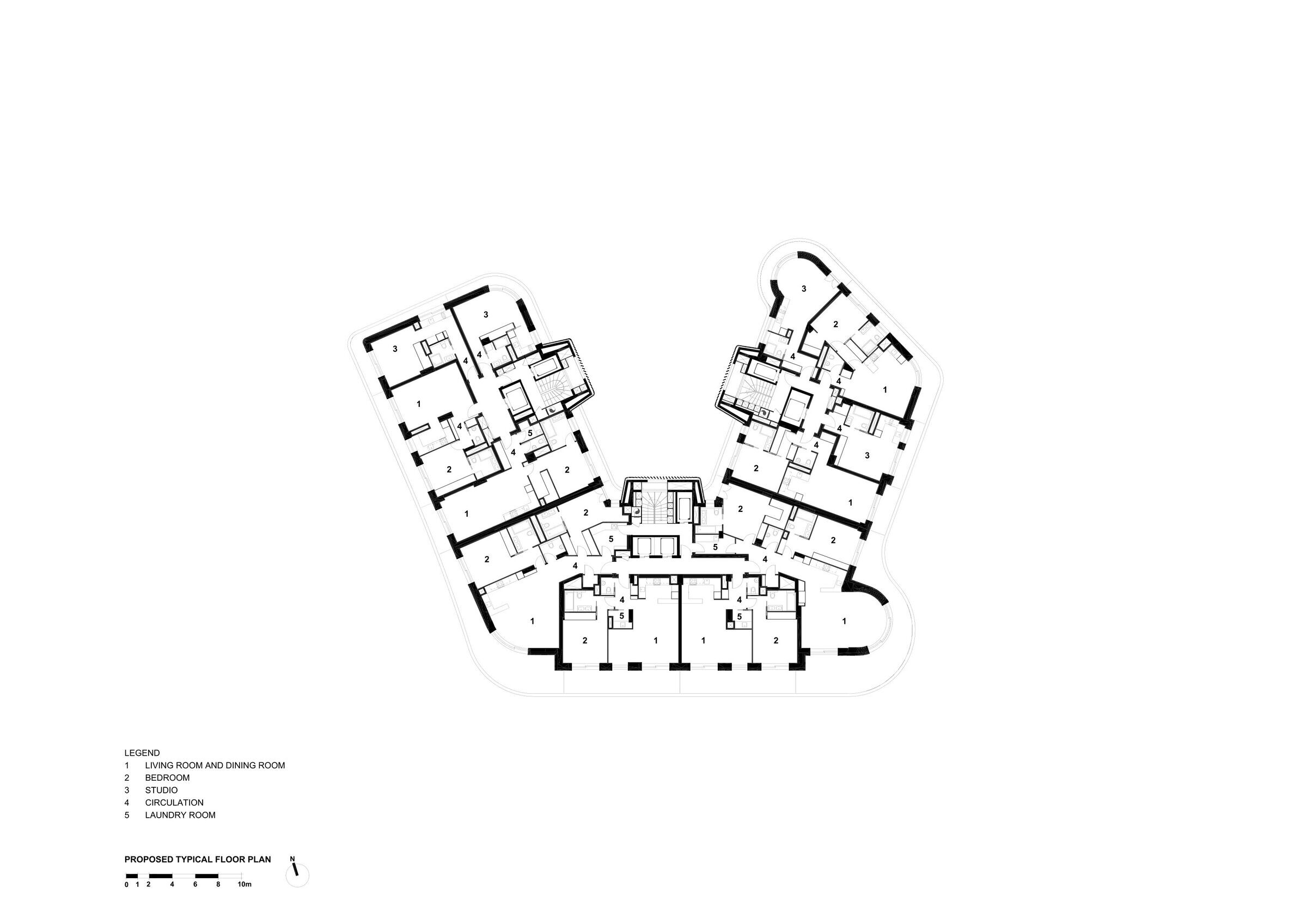
Architecturally, the façade design distinguishes between the existing building refurbishment and the new build program. The façade design also resets the silhouette of the building at its crown and redefines the building’s connection with the ground along the Avenue de la Costa. Broadly, there are 5 main façade types:
1. The ceramic rainscreen on the existing building,
2. The aluminium louvers on the existing stairwells on the North side of the building,
3. The window walls enclosing the new build program at both high level and low level of the new build program,
4. The large format coated aluminium panels forming the fascia cladding of the terraces and balconies of the new build program,
5. The stainless-steel shell canopy over the entrance lobby at ground floor level. The ceramic rain screen cladding build- up provides a ventilated cavity on thermal insulation which is fixed back to the existing concrete frame and masonry. The windows and doors are thermally broken, anodised aluminium double glazed units fitted with external venetian blinds. The existing staircases on the North façade are extended to serve the new upper levels and clad with new extruded anodised aluminium louvers. The louvers are individually oriented at variable angles to prevent see-through views. Spacing is controlled to comply with the 50% opening for natural smoke extraction. The penthouse facades between floors 15 and 17 are floor to ceiling double glazed units with minimalist frames which incorporate motorized sliding doors and exterior venetian blinds for solar protection. The panoramic views from the penthouses are spectacular, so opaque parts are kept to a minimum. Decorative stainless-steel fins provide visual privacy for the bathrooms and hide structural elements.
Following extensive surveying, monitoring and modelling of the existing concrete structure, the structural refurbishment has focused on 2 key main objectives: stiffening the structure to meet current seismic requirements and reinforcing the retained structure to transfer static and dynamic loads relating to the new structure at the top of the tower. The enabling works included the demolition of the top 2.5 floors of the building and the concrete frame and slabs of the car parking areas to allow for the extension of the basement areas (floors B2 to B7). Smaller, target demolition works to external slabs and balconies are undertaken to treat the effects of corrosion due to humid, saline air. The new structure for floors 15 – 18 is a lightweight, low carbon steel structure (XCarb) providing a good strength / weight ratio and control of deflections which have enabled us to use a glazed window wall with minimal framing profile in the penthouses. The use of steel has allowed for flexible open plan penthouse layouts and generous cantilevers to create large outdoor terraces. Between floors 14 and 15 a new steel frame ‘transfer slab’ has been created. This has a dual purpose; firstly, to consolidate the existing concrete frame and secondly to follow an open plan structural grid in the penthouses. 75% of the existing concrete structure has been retained.

Team:
Owner: HPP
Developer: SAM Le Soleil
Architect: Zaha Hadid Architects (ZHA)
ZHA Project Director: Stephane Vallotton
ZHA Project Architect: Pelayo Bustillo Macias
ZHA Project Leads: Lenka Petrakova, Frenji Koshy
ZHA Project Team: Afsoon Eshaghi, Alex Nap, Anna Uborevich-Borovskaya, Branko Svarcer, Chiara Baiocco, Drew Merkle, Hyun Jin Kim, Ken Bostock, Martin Pfleger, Meenakshi Sharma, Michelle Sin, Nicolas Tornero, Othmane Kandri, Roberta Sartori, Sharon Sin, Thanh Dao, Yasemin Muduroglu, Yihoon Kim, Zohra Rougab ZHA Competition Project Director: Cristiano Ceccato
ZHA Competition Associate: Lydia Kim
Local Architect: Square Architecte
Structural Engineers: Eckersley O’Callaghan and OTEIS
Cost Consultant: VPEAS
Environmental Consultant: AIA
Façade Engineering: Eckersley O’Callaghan
M&E Engineering: INGETEC
Fire Engineer: INGETEC
Landscape Consultant: Jean Agapit
Lighting Design: 8’18”
Acoustic Consultant: INGETEC
Project Manager: MIP
Signage Consultant: Space Agency

